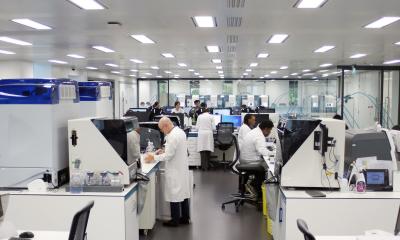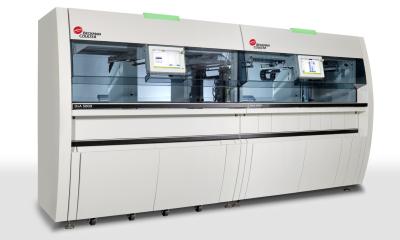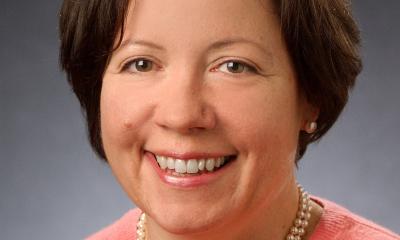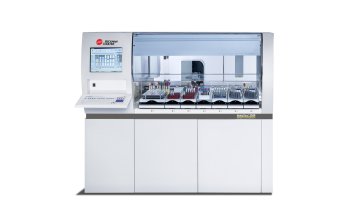
Image source: Beckman Coulter
Sponsored • Lab equipment
Minimising laboratory errors with automation
Staffing shortages, increased testing volumes and the need to improve turnaround times have led to labs seeking to streamline services. Automation is the key, thanks to the role it plays in minimising time-consuming, costly mistakes. Over recent years, several factors have led to labs struggling to meet demands, facing a need to speed up and streamline services in order to counteract staffing shortages, increased testing volumes and the need to improve turnaround times. This need has been especially highlighted during the Covid-19 pandemic, as impacted labs have struggled to keep up with the daily demands of Covid-19 testing. Faced with these challenges, labs have pinpointed a particular area of improvement: the reduction of errors in testing. Read on to find out why.
Laboratory testing is widely relied upon when it comes to making a diagnosis. In fact, estimates suggest that 70 percent of all healthcare decisions affecting diagnoses or treatment involve laboratory testing.1 When critical lab results are the basis of clinical decisions, reducing both pre- and post-analytical errors is of paramount importance.
The biggest problem lies in pre-analytical errors, which account for up to 70 percent of all mistakes made in laboratory diagnostics.4 Of these, it has been found that 24 – 30 percent of laboratory errors influence patient care, while actual or potential patient harm as a result of errors is registered in 3 – 12 percent of cases.5,6,7 These numbers show the desperate need faced to reduce these errors to improve patient care and avoid mistreatments across the board.
In addition to their impact on patient care, however, laboratory errors are also costly. According to research, a laboratory in the US can expect to incur approximately $180,000 per year in costs related to pre- and post-analytical errors, on average, with these errors including labelling mistakes, incorrect samples and insufficient sample volumes.8,9 Many of the errors detected in labs can be put down to one simple cause: human error. This means the solution is clear: automation.

Image source: Beckman Coulter
Automation can play a key role
Automation is key to minimising time-consuming errors and is a necessity for any lab striving to meet the ever-evolving demands faced. In streamlining services by helping mitigate bottlenecks in the sample preparation phase, automation cuts down on the time spent on each test, speeding up the service. However, it also reduces person-to-person variation and human error in lab testing, substantially cutting down on mistakes and leading to more accurate results across the board.
Reducing the time overworked personnel spends on testing by implementing ways to automate pre- and post-analytical phases of routine laboratory testing also, however, provides labs with an additional benefit: it enables technologists to focus their time on analytics and reporting, harnessing their expertise and allowing them to apply it where it’s needed most, therefore improving their analysis of results and, again, reducing errors further.
Implementing ways to automate pre- and post-analytical phases of routine laboratory testing also enables technologists to focus their time on analytics and reporting. In addition, automation helps mitigate bottlenecks faced when preparing samples by processing samples quicker, more efficiently, and more consistently than ever before.
Convinced that automation is the next necessary step for your laboratory? Visit our automation page to view our full suite of automation solutions: www.beckmancoulter.com/en/products/automation.
Sources
- Badrick T. (2013) Evidence-Based Laboratory Medicine. Clin Biochem Rev. 2013 Aug; 34(2): 43–46
- Bonini P, Plebani M, Ceriotti F, Rubboli F. Errors in laboratory medicine. Clin Chem 2002;48:691-8.
- Astion ML, Shojana KG, Hamil TR, Kim S, Ng VL. Classifying laboratory incident reports to identify problems that jeopardize patient safety. Am J Clin Pathol. 2003;120(1):18-26. doi: 10.1309/8EXC-CM6Y-R1TH-UBAF.
- Lippi G, Chance JJ, Church S, Dazzi P, Fontana R, Giavarina D, et al. Preanalytical quality improvement: from dream to reality. Clin Chem Lab Med. 2011;49:1113–26. doi: 10.1515/CCLM.2011.600.
- Carraro P, Plebani M. Errors in a stat laboratory: types and frequencies 10 years later. Clin Chem. 2007 Jul; 53(7):1338-42. doi: 10.1373/clinchem.2007.088344.
- Plebani M. The detection and prevention of errors in laboratory medicine. Ann Clin Biochem. 2010 Mar; 47(Pt 2):101-10. doi: 10.1258/acb.2009.009222.
- Plebani M, Carraro P. Mistakes in a stat laboratory: types and frequency. Clin Chem. 1997 Aug; 43(8 Pt 1):1348-51.
- Barak M, Jaschek R. A new and effective way for preventing pre-analytical laboratory errors. Clin Chem Lab Med. 2014 Feb;52(2):e5-8. doi: 10.1515/cclm-2013-0597.PMID: 24096442.
- Green SF. The cost of poor blood specimen quality and errors in preanalytical processes. Clin Biochem. 2013 Sep;46(13-14):1175-9. doi: 10.1016/j.clinbiochem.2013.06.001. Epub 2013 Jun 14. PMID: 23769816.
09.12.2021











